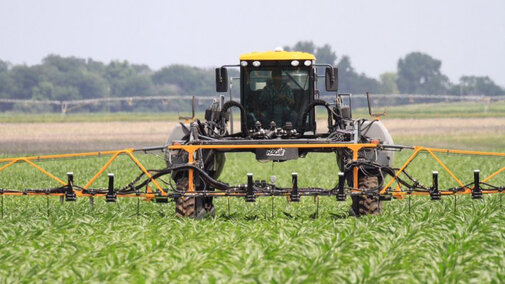

Growers are planning for nitrogen application for their 2019 corn. Fall application of N has relatively high loss potential through leaching, volatilization, and denitrification compared with later application. Applying N in the fall is considered the riskiest N management practice. It can contribute to nitrate leaching, a particular environmental concern in Nebraska (Figure 1; EC2008).
Fertilizer and manure N eventually convert to nitrate-N unless they are lost to volatilization or taken up as ammonium. The amount taken up as ammonium is usually much smaller compared to nitrate. Nitrate is highly mobile in soil water and more soil water movement implies more soil nitrate movement. When there is no crop to actively take up the nitrate, it is at risk of being lost.
Weather, soil type, and timing of crop N uptake are important to N loss potential. The weather from fall through late spring is not well-predicted; however, occurrences of weather extremes have increased, including an increase in annual average daily maximum precipitation (Figure 2; Irmak et al., 2012).
The potential for N loss while supplying adequate N for the corn crop can be minimized by avoiding application in excess of crop N needs (i.e., avoiding fall application). Consider a more robust and less risky N management method that includes:
- applying a small percentage of N near planting time;
- follow with sidedress N applied as late as is possible given your equipment capabilities or several fertigation applications that are timed with crop uptake needs; and
- ensure the final application of N is done before the R3 growth stage.
Research studies conducted across Nebraska, particularly those with sensor-based N application methods, show that these methods increase nitrogen use efficiency and maintain or increase profit compared to previous methods, creating a win-win scenario.

If we are unable to persuade you to split up N applications, what are the considerations you should make going forward?
- Avoid fall N application for soils of hydrologic Group A (sand, loamy sand, sandy loam) and Group B (loam, silt loam, silt).
- Avoid fall application of fertilizers containing urea or nitrate.
- Apply only when soil temperature is consistently below 50°F to slow nitrification. (Last week temperatures fluctuated above and below 50°F at the 4-inch depth.)
- Use an inhibitor with known efficacy when applying N.
- Hope for dry cold weather!

